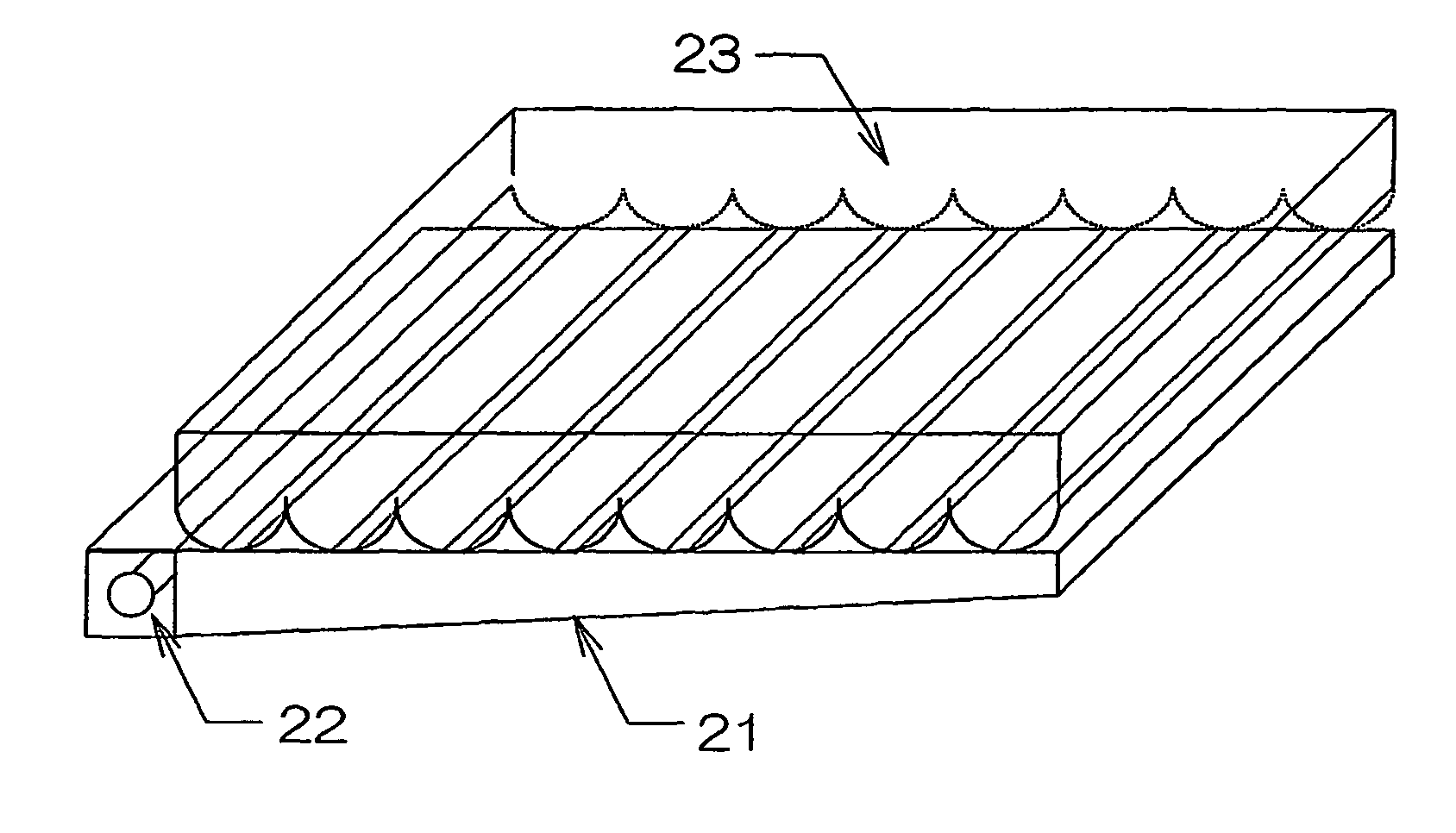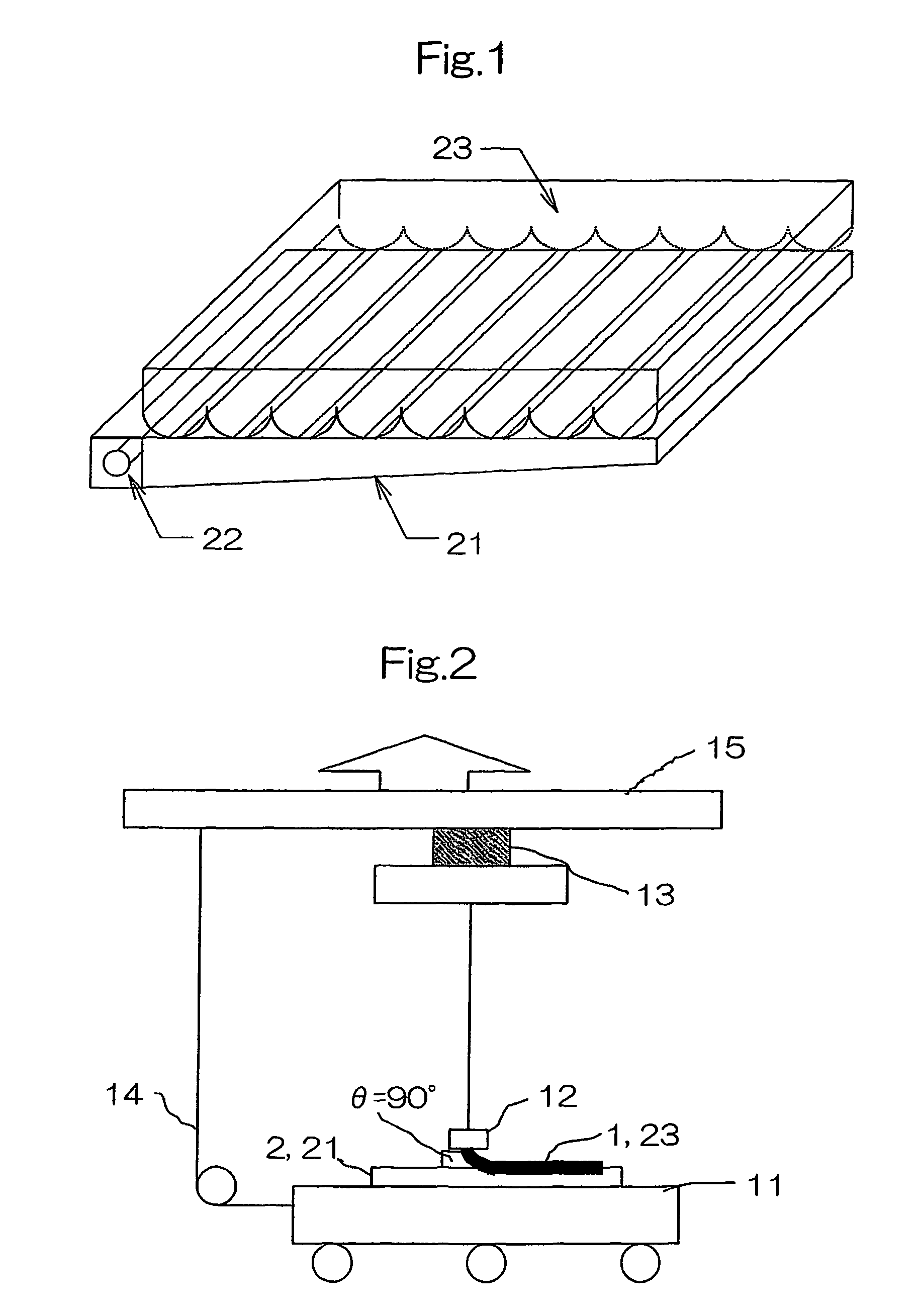Plastic bonding method
a plastic bonding and plastic technology, applied in the field of plastic bonding methods, can solve the problems of inability to apply the technology disclosed therein to bonding materials sensitive to heat, inability to manufacture integral members of planar light source devices in thin-walled structures, and inability to meet the requirements of heat resistance, etc., to achieve the effect of reducing problems and inconveniences
- Summary
- Abstract
- Description
- Claims
- Application Information
AI Technical Summary
Benefits of technology
Problems solved by technology
Method used
Image
Examples
example 1
[0043]In this Example, as a source of energy rays, a commercially available xenon lamp, tradenamed “UER 200 / HM172” manufactured by and available from USHIO U-TECH INC. and capable of emitting energies of 7.3 eV, was used. For the first member, a vinylon film, tradenamed “Vinylon Film #3000” manufactured by and available from Kuraray Co., Ltd., was used and for the second member, a polyethylene terephthalate film, tradenamed “COSMOSHINE A4300” manufactured by and available from Toyobo. Co., Ltd, was used. Using this energy ray source and the materials, the vinylon film and the polyethylene terephthalate film, both spaced 2 mm from the energy rays source, were irradiated with ultraviolet rays of 10 mW / cm2 emitted from the xenon lamp for 200 seconds.
[0044]Subsequently, the vinylon film and the polyethylene terephthalate film were laminated by the application of a laminating pressure of 0.3 kgf / cm2 (0.03 MPa) to bond them together, followed by measurement of the adhesive strength of the...
example 2
[0045]Using an injection molded plate of methacrylate resin, tradenamed “PARAPET GH-S” manufactured by and available from Kuraray Co., Ltd., as the second member and a polycarbonate film, tradenamed “Iupilon film” manufactured by and available from Mitsubishi Engineering-Plastics Corporation, as the first member, the energy rays were irradiated in a manner substantially identical with that in Example 1 to bond them together. Measurement after the energy ray irradiation has indicated that the adhesive strength of the film of 100 mm in width was 0.12 kgf (1.2 N), and it has thus been found that the films could be satisfactorily bonded together without any bonding agent employed.
example 3
[0046]Using an injection molded plate of methacrylate resin, tradenamed “PARAPET GH-S” manufactured by and available from Kuraray Co., Ltd., as the second member and an acrylic film, tradenamed “ACRYPLEN” manufactured by and available from Mitsubishi Rayon Co., Ltd., as the first member, the energy rays were irradiated in a manner substantially identical with that in Example 1 to bond them together. Measurement after the energy rays irradiation has indicated that the adhesive strength of the film of 100 mm in width was 0.18 kgf (1.8 N), and it has thus been found that the films could be satisfactorily bonded together without any bonding agent employed.
PUM
| Property | Measurement | Unit |
|---|---|---|
| quantum energy | aaaaa | aaaaa |
| pulling speed | aaaaa | aaaaa |
| peel angle | aaaaa | aaaaa |
Abstract
Description
Claims
Application Information
 Login to View More
Login to View More - R&D
- Intellectual Property
- Life Sciences
- Materials
- Tech Scout
- Unparalleled Data Quality
- Higher Quality Content
- 60% Fewer Hallucinations
Browse by: Latest US Patents, China's latest patents, Technical Efficacy Thesaurus, Application Domain, Technology Topic, Popular Technical Reports.
© 2025 PatSnap. All rights reserved.Legal|Privacy policy|Modern Slavery Act Transparency Statement|Sitemap|About US| Contact US: help@patsnap.com


